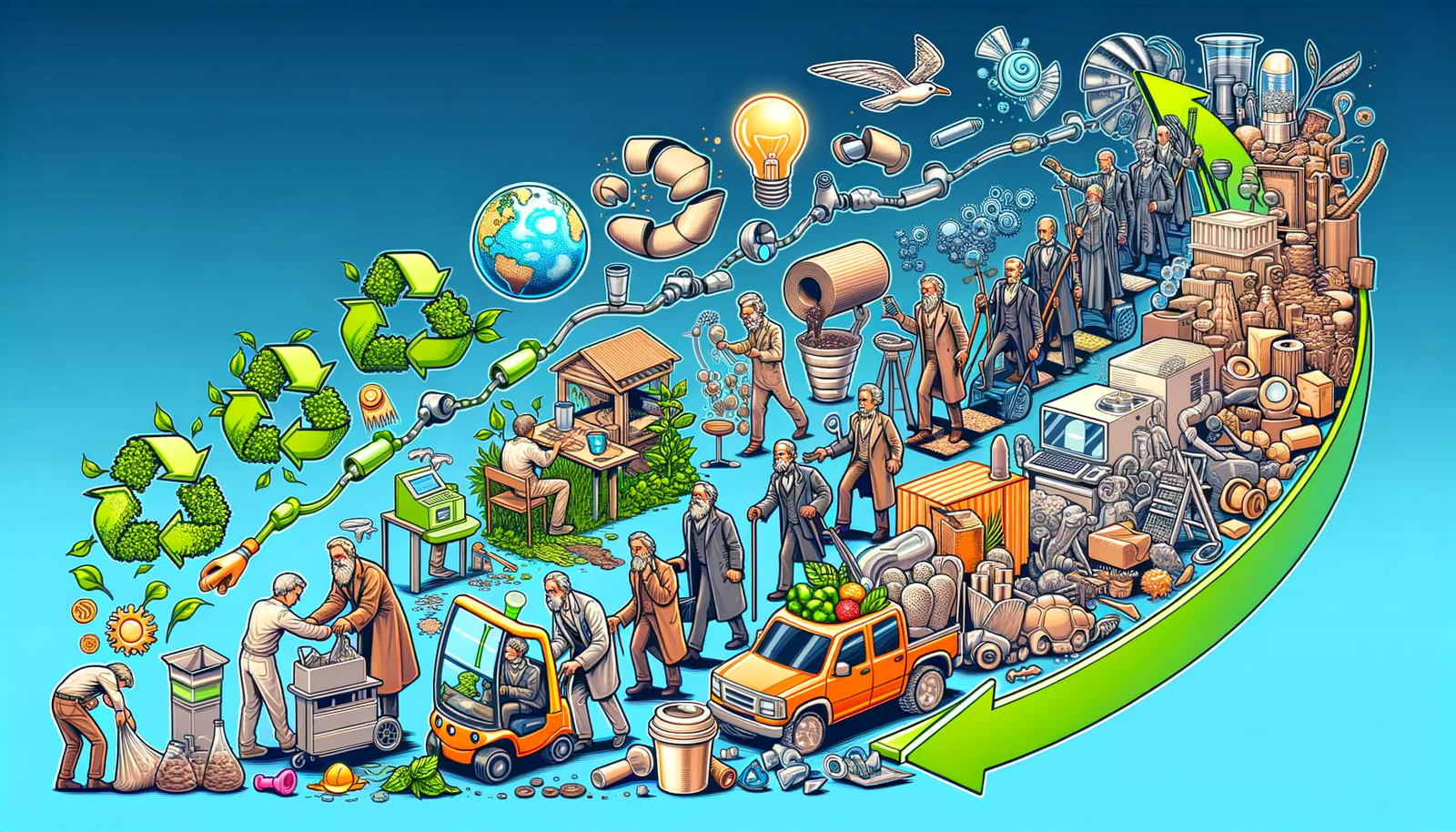Your Cart is Empty
Customer Testimonials
-
"Great customer service. The folks at Novedge were super helpful in navigating a somewhat complicated order including software upgrades and serial numbers in various stages of inactivity. They were friendly and helpful throughout the process.."
Ruben Ruckmark
"Quick & very helpful. We have been using Novedge for years and are very happy with their quick service when we need to make a purchase and excellent support resolving any issues."
Will Woodson
"Scott is the best. He reminds me about subscriptions dates, guides me in the correct direction for updates. He always responds promptly to me. He is literally the reason I continue to work with Novedge and will do so in the future."
Edward Mchugh
"Calvin Lok is “the man”. After my purchase of Sketchup 2021, he called me and provided step-by-step instructions to ease me through difficulties I was having with the setup of my new software."
Mike Borzage
Design Software History: Eco-Friendly Materials in CAD: Historical Evolution and Future Trends
July 28, 2024 4 min read


Introduction to Eco-Friendly Materials in CAD
Definition and Importance
Eco-friendly materials are substances that have a minimal impact on the environment during their lifecycle, from production to disposal. These materials aim to reduce pollution, conserve resources, and promote sustainability. In the realm of Computer-Aided Design (CAD), the implementation of eco-friendly materials is essential for creating sustainable designs and promoting environmental stewardship.
CAD software plays a pivotal role in sustainable design by enabling designers and engineers to create, test, and optimize products using eco-friendly materials. Through advanced modeling and simulation tools, CAD software helps in assessing the environmental impact of materials and processes, ensuring that designs are not only functional but also environmentally responsible.
Historical Context
The concept of eco-friendly design has been around for centuries, but it gained significant momentum in the late 20th century due to increasing awareness of environmental issues. Early attempts at eco-friendly design were driven by the need to reduce waste and conserve resources. However, the integration of these principles into CAD software began more prominently in the 1980s and 1990s.
During this period, the societal and industrial push towards sustainability became more pronounced. Governments, environmental organizations, and industries started recognizing the importance of sustainable practices. This led to the development of regulations and standards that encouraged the adoption of eco-friendly materials and sustainable design methodologies in various sectors.
Pioneers and Innovators
Key Figures
Several influential individuals and researchers have contributed significantly to the development and promotion of eco-friendly materials in CAD. Among them are:
- Dr. Michael Braungart - A chemist and co-author of the book "Cradle to Cradle," which outlines the principles of eco-effective design.
- William McDonough - An architect and co-author of "Cradle to Cradle," he has been a strong advocate for sustainable design in architecture and product development.
Notable companies such as Autodesk and Dassault Systèmes have also played a crucial role in advancing the use of eco-friendly materials in CAD. Autodesk, for instance, has developed tools like the Autodesk Sustain to help designers evaluate the environmental impact of their materials and processes. Dassault Systèmes, through its SOLIDWORKS Sustainability module, allows users to analyze and optimize the environmental performance of their designs.
Milestones in Development
The journey towards integrating eco-friendly materials in CAD has been marked by several significant breakthroughs. Some of the early milestones include:
- The development of material databases that include environmental impact data.
- The introduction of life cycle assessment (LCA) tools in CAD software.
- The implementation of sustainability modules that allow for real-time evaluation of design choices.
These advancements have paved the way for more sophisticated tools and practices, enabling designers to create products that are not only efficient but also environmentally friendly.
Technological Evolution in CAD Software
Integration and Tools
Over the years, CAD software has evolved to incorporate eco-friendly materials more seamlessly. Early versions of CAD software had limited capabilities for assessing material sustainability. However, modern CAD tools offer a range of features specifically designed for sustainable design.
These features include:
- Advanced material libraries that contain comprehensive data on the environmental impact of materials.
- Simulation tools that allow for the analysis of energy consumption, material efficiency, and waste reduction.
- Optimization algorithms that help in selecting the most sustainable materials and design practices.
Material Databases
Material libraries within CAD systems have evolved significantly. Initially, these libraries contained basic information about material properties such as strength, density, and elasticity. Today, they also include detailed data on the environmental impact of materials, such as carbon footprint, energy consumption, and recyclability.
These advanced material databases enable designers to make informed choices about the materials they use, ensuring that their designs are both functional and environmentally responsible. Features such as real-time updates and cloud-based access have further enhanced the utility of these databases, making them an indispensable tool for sustainable design.
Impact and Future Directions
Current Impact on Industries
The integration of eco-friendly materials in CAD has had a profound impact on various industries. In the automotive sector, for example, companies are using CAD tools to design lighter, more fuel-efficient vehicles. In aerospace, the use of sustainable materials has led to the development of more efficient and environmentally friendly aircraft. In construction, eco-friendly materials are being used to create buildings that are more energy-efficient and have a lower environmental impact.
The benefits realized through the use of eco-friendly materials in CAD are manifold. They include reduced energy consumption, lower carbon emissions, and decreased waste. These benefits not only contribute to environmental sustainability but also result in cost savings and improved product performance.
Future Trends and Research
Looking ahead, several emerging technologies and new materials are poised to further advance sustainable design in CAD. Artificial intelligence (AI) and machine learning (ML) are playing an increasingly important role in this field. AI and ML algorithms can analyze vast amounts of data to identify optimal design solutions and materials, thereby enhancing the efficiency and sustainability of the design process.
Moreover, research is ongoing in the development of new eco-friendly materials, such as biodegradable plastics, advanced composites, and renewable energy sources. These materials hold the promise of even greater environmental benefits and are likely to be integrated into CAD tools in the near future.
Conclusion
The historical journey of integrating eco-friendly materials in CAD has been marked by significant milestones and breakthroughs. From early attempts at sustainable design to the sophisticated tools available today, the evolution of CAD software has played a crucial role in promoting environmental stewardship and sustainability.
As we look to the future, the ongoing importance of eco-friendly materials in CAD cannot be overstated. With the continued advancement of technology and the development of new materials, the potential for sustainable design is greater than ever. By embracing these innovations, designers and engineers can contribute to a more sustainable and environmentally responsible world.
Also in Design News

Revit Tip: Bulk Editing in Revit: Multi‑Select with the Properties Palette
December 15, 2025 2 min read
Read More
ZBrush Tip: Convert Polygroups to Polypaint for rapid non‑destructive color blocking
December 15, 2025 2 min read
Read MoreSubscribe
Sign up to get the latest on sales, new releases and more …



